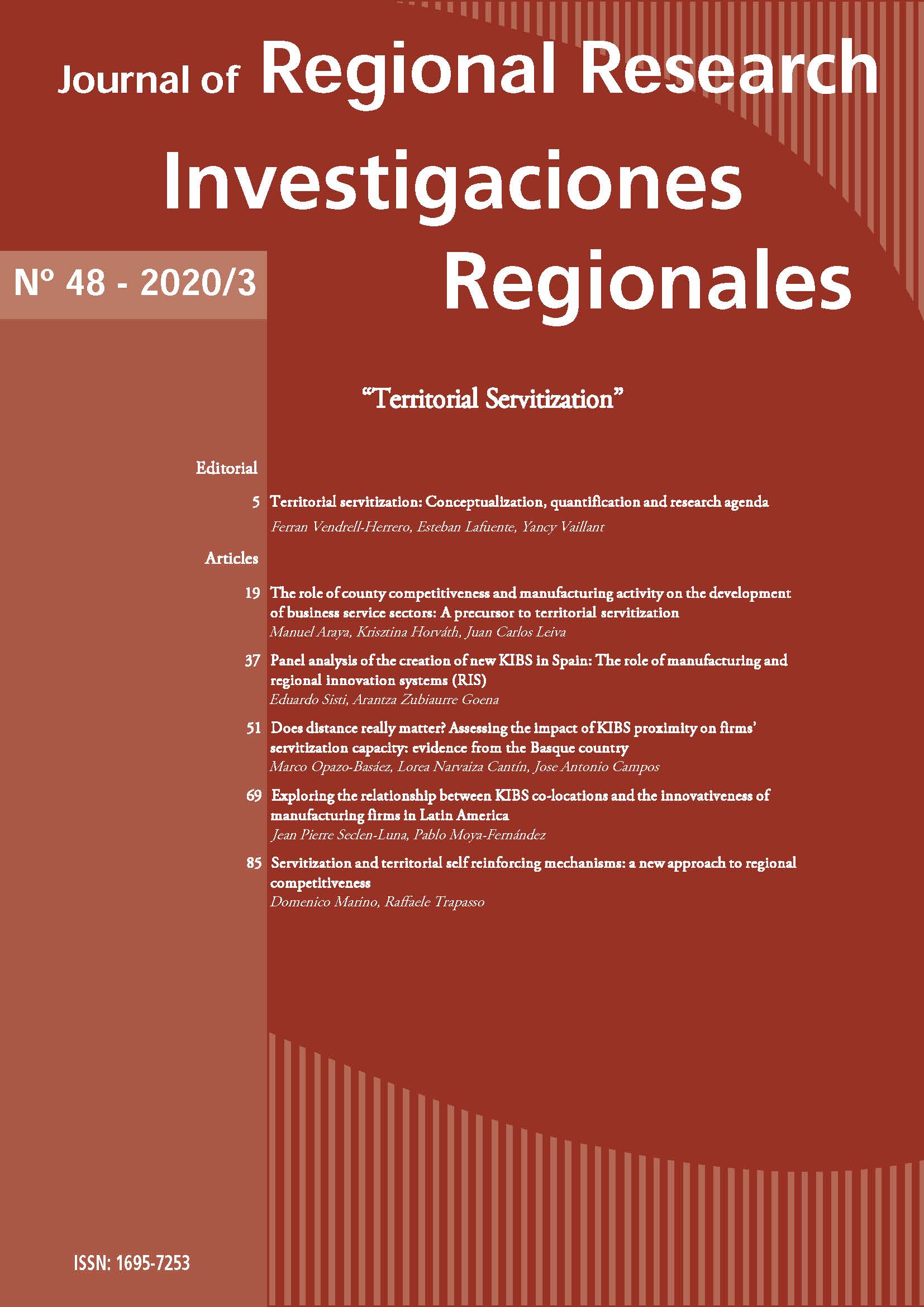Exploring the relationship between KIBS co-location and the innovativeness of the manufacturing firms in Latin America
DOI:
https://doi.org/10.38191/iirr-jorr.20.021Palabras clave:
KIBS, Manufacturing, Innovation, Latin America, Firm LocationResumen
Literature has provided empirical evidence showing the importance of location for understanding KIBS effective service provision. According to territorial servitization postulates KIBS are also fundamental for the development of the manufacturing firms. Despite KIBS can be an important source of innovation, limited attention is paid of KIBS in Latin America region. The purpose of this research is analysing the relationship between KIBS co-location and innovativeness of the manufacturing firms. Drawing on the World Bank Enterprise Survey 2017 for Latin-American countries, authors analyse 3,029 manufacturing firms using OLS method. Findings indicate that manufacturing firms’ location based on KIBS proximity is a critical determinant of innovativeness. This relationship is considerably stronger in Central American countries, where according to our data there is KIBS scarcity.
Descargas
Publicado
Número
Sección
Licencia
Aquellos autores/as que tengan publicaciones con esta revista, aceptan los términos siguientes:
En el momento de aceptar la publicación de sus artículos en Investigaciones Regionales / Journal of Regional Research, los autores acceden a utilizar la licencia Creative Commons CC BY-NC. IIRR/JRR es una revista abierta que permite a los autores retener el máximo control sobre su trabajo. Los autores aceptarán utilizar la licencia Creative Commons Attribution-NonCommercial. Esta licencia permite a cualquier persona copiar y distribuir el artículo con propósitos no comerciales, siempre y cuando se atribuya adecuadamente la atribución del trabajo a la revista y a los autores.

